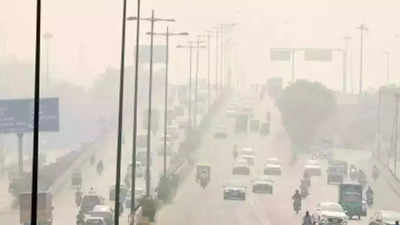In response to the pressing issue of pollution, a new version of a revolutionary pollution detection system has been introduced. This system, developed through collaboration between environmental scientists and tech experts, marks a significant advancement in environmental monitoring technology.
Features of Version 2.0
- Enhanced Capabilities:
- Integration of cutting-edge algorithms and advanced data analytics techniques.
- Provides more precise and comprehensive identification of pollution sources.
- Data Sources:
- Utilizes real-time data streams from:
- Satellite imagery.
- Ground sensors.
- Industrial monitoring stations.
- Utilizes real-time data streams from:
- Improved Analysis:
- Analyzes complex data patterns and trends.
- Enables detection of emerging pollution hotspots with high accuracy.
- User Interface Redesign:
- Enhanced usability and accessibility.
- Facilitates easier interpretation of insights for stakeholders.
Reception and Impact
- Positive Reception:
- Welcomed by environmental advocates and policymakers.
- Recognized for its potential to enhance pollution control measures and policy interventions.
- Beneficial Applications:
- Enables prioritization of resources and interventions based on accurate pollution source identification.
- Contributes to safeguarding public health and preserving ecosystems.
Future Developments
- Planned Enhancements:
- Incorporation of machine learning algorithms for predictive modeling.
- Expansion of geographical coverage.
- Hope for Sustainability:
- Technological innovations like Version 2.0 offer hope for a more sustainable future amidst global pollution and climate change challenges.
Multiple Choice Questions (MCQs) with Answers:
- What is one of the key enhancements in Version 2.0 of the pollution detection system?
- a) Integration of outdated algorithms
- b) Reliance solely on ground sensors
- c) Analysis of complex data patterns
- d) Limited geographical coverage
- Answer: c) Analysis of complex data patterns
- Which data sources are utilized by the pollution detection system?
- a) Only satellite imagery
- b) Ground sensors and industrial monitoring stations
- c) Ground sensors and weather forecasts
- d) Satellite imagery and weather forecasts
- Answer: b) Ground sensors and industrial monitoring stations
- How has the user interface been improved in Version 2.0 of the pollution detection system?
- a) It has become more complex
- b) It has been redesigned for better accessibility
- c) It has been removed altogether
- d) It has fewer features
- Answer: b) It has been redesigned for better accessibility
- What is one potential benefit of the upgraded pollution detection system according to the text?
- a) Decreased accuracy in identifying pollution sources
- b) Limited impact on public health
- c) Prioritization of resources based on accurate pollution source identification
- d) Exacerbation of environmental crises
- Answer: c) Prioritization of resources based on accurate pollution source identification
